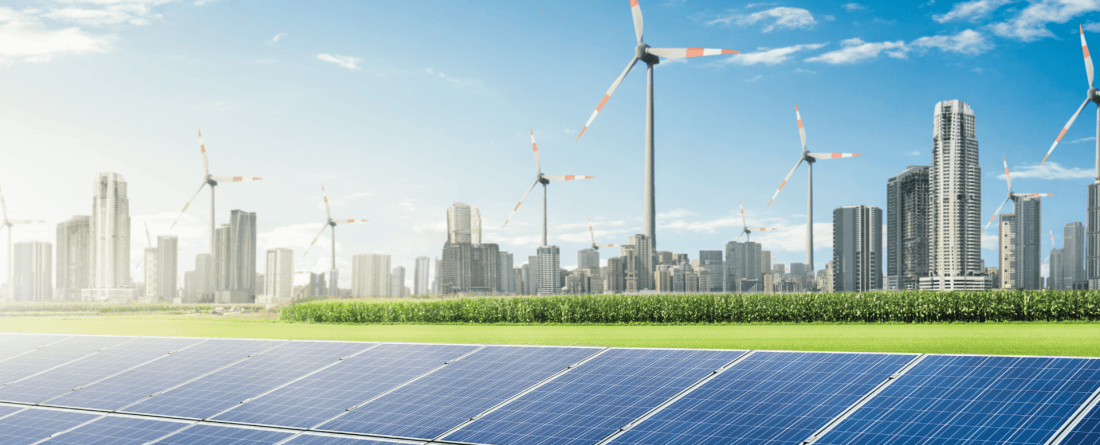
JAKARTA, INDONESIA | June 4, 2024 - The Institute for Essential Services Reform (IESR) and the Center for Global Sustainability (CGS) at the University of Maryland launched new research focused on achieving a successful clean energy transition in Indonesia. The launch event showcased two new reports, followed by a discussion session to share crucial findings and recommendations with Indonesian stakeholders.
“Moving away from fossil fuels in Indonesia requires a plan that comes from a thorough and deep analysis balancing energy security, optimizing environmental sustainability, and ensuring affordability for Indonesian citizens,” said Fabby Tumiwa, Executive Director of IESR, during the launch event. “To achieve this, the study analyzes both on-grid and off-grid power generation using several strategies: reducing power plant capacity, flexible power plant operation, early retirement, biomass burning, renewable energy substitution, construction cancellation, grid connection, and carbon storage. I am thrilled today that we are announcing at long awaited report, written by two excellent teams, IESR and the Center for Global Sustainability at the University of Maryland.”
This event launched two new research reports:
- The first report, "1.5°C-aligned Coal Power Transition Pathways in Indonesia," assessed existing and planned coal power plants to determine retirement priorities using a multi-criteria framework aligned with a 1.5°C emission pathway. Building on the current Comprehensive Investment and Policy Plan (CIPP) framework, the report outlines strategies to achieve peak power emissions of 382 MTCO₂ by 2025 and near-zero emissions by 2050.
- The second report, “Industrial Parks in Indonesia: Challenges and Opportunities for Sustainable Industrial Development,” introduced the first-of-its-kind database on industrial parks in Indonesia, aimed at expanding the CIPP initiative to strengthen regional economies. It provides a detailed overview of industrial parks, capturing the challenges and opportunities of Indonesia’s energy transition at both local and national scales.
“Today’s event serves as a platform for discussing how Indonesia can successfully adopt a clean energy transition and contribute to global climate goals," said CGS Director Nate Hultman during the launch event. "The new dataset and research that will be described today can support transformative strategies critical for closing investment and resource gaps while providing a new framework to assess overall 1.5°C-aligned transition strategies in light of national goals."
Learn more about the new reports below.
New report unveils high-ambition retirement pathway to support Indonesia’s coal transition
A groundbreaking analysis by the Center for Global Sustainability (CGS) at the University of Maryland and the Institute for Essential Services Reform (IESR) has produced the first detailed transition pathway assessment covering both on-grid and captive coal power plants in Indonesia. The report outlines a comprehensive, high-ambition 1.5°C-compatible pathway for Indonesia’s coal power transition, detailing strategies to achieve peak power emissions at 382 MTCO₂ by 2025 and near-zero emissions by 2050.
Indonesia, one of the world’s largest coal producers, has signaled its intent to reduce its reliance on coal and support both domestic and global climate goals. Despite having several financing mechanisms such as the Just Energy Transition Partnership (JETP) and a power sector emissions reduction roadmap, the Comprehensive Investment and Policy Plan (CIPP), critical elements for a successful coal transition remain missing, hindering the full realization of these investments and policies.
“Captive coal power has been growing rapidly in Indonesia. As projects under construction complete, captive coal will account for 35% of total installed coal capacity by 2025,” said Ryna Cui, Research Director at the Center for Global Sustainability and report author. “As the CIPP does not include an analysis of off-grid captive decarbonization pathways, this report goes beyond the CIPP’s proposals to determine more ambitious strategies to decarbonize Indonesia’s power sector for both on-grid and captive coal power plants.”
Combining a global integrated assessment model (GCAM), a power system dispatch model (PLEXOS), and bottom-up analyses, the report explores a range of transition options for captive and on-grid coal plants, including early retirement, biomass co-firing, reduced utilization, and carbon capture and storage (CCS). Between 2025 and 2050, adopting biomass co-firing at 80 eligible captive coal units (13 GW) could contribute to nearly half of the cumulative emissions reductions, while early retirement could contribute to nearly half of the cumulative emissions reductions for on-grid plants.
“Under our pathway, on-grid plants deliver more emissions reductions to offset growing captive coal emissions in the near term and contribute to 68% of the cumulative emissions reduction through 2050,” said Dr. Raditya Wiranegara, IESR Research Manager. “Our analysis strengthens the existing CIPP with steadfast, forward-looking policies aimed at phasing out coal power plants and implementing transition strategies for both on-grid and off-grid captive plants aligned with a 1.5°C trajectory.”
Achieving this accelerated coal power transition requires a significant transformation of Indonesia’s power system. Integrating increasing intermittent renewable energy sources will necessitate new storage technologies, expanded grid infrastructure, and stable, flexible operations. The analysis reveals that embracing low-carbon technologies like CCS and biomass co-firing can reduce generation costs by 21% by 2030 and 75% by 2050 while cutting power emissions by 50% by 2040.
“Significant investments in new storage technologies, grid expansion, and stable and flexible operation are vital for constructing a resilient power system in Indonesia centered on renewable energy,” said Maria A. Borrero, CGS Research Associate and report lead author. “Through the adoption of transformative strategies such as biomass co-firing, renewable substitution, grid connection, and carbon capture storage, Indonesia can successfully navigate its energy transition aligned with the global 1.5°C target, nearing zero emissions by 2050.”
With $97 billion required to achieve 2030 targets, according to the CIPP report, navigating this transition will not be easy. The analysis offers several recommendations for bridging current financing and implementation gaps, including promoting green finance frameworks, establishing long-term priorities for coal plant retirement, retrofit, and repurposing, and implementing a national task force to design and implement coal plant retirements and repurposing measures.
The comprehensive 1.5°C aligned retirement pathway outlined in this report proposed integral strategies to achieve both domestic and global climate goals. To further assess the strategies’ suitability, future efforts should focus on accurately quantifying the costs of all approaches. Additionally, further analysis is required to assess aspects such as onsite solar potential at captive plant locations and the biomass supply available in the country for biomass co-firing.
Download the report here and check out our previous analysis of financing Indonesia’s coal transition here.
New first of its kind database and report on Indonesia’s industrial parks underscore the importance of data availability to achieve a coal transition
The Center for Global Sustainability has released a pivotal report and comprehensive database on Indonesia's industrial parks, marking the first of its kind to provide in-depth insights into these critical economic zones. Through this dataset, the analysis seeks to capture changes in Indonesia’s industrial policy, identify the major electricity sources of industrial parks, and analyze the impact of industrial parks on local communities.
"This database addresses a critical knowledge gap regarding industrial parks, significantly enhancing data availability which is vital for understanding demand and making informed decisions about captive coal development and other aspects related to industrial park research,” said Jiehong Lou, Assistant Research Director at the Center for Global Sustainability and author of the report. “Importantly, we will open the dataset to the entire research community and continue to improve and maintain it through CGS. We welcome all collaborations and contributions to enrich this dataset.”
This dataset analyzed and compiled key statistics on industrial parks in Indonesia, highlighting the substantial electricity capacity of these parks, with 79 industrial parks reporting a total capacity of 23.07 GW. Notably, 10.91 GW of this capacity is dedicated to the 13 industrial parks focused on nickel processing. The electricity sources are diverse, with 6.20 GW sourced exclusively from PLN, Indonesia’s state-owned electricity company, and 6.85 GW from captive coal power. Additionally, 21 parks are incorporating solar PV and nine parks are utilizing bioenergy, reflecting a shift towards renewable energy solutions.
Industrial parks are a strategic tool for economic development and play a pivotal role in driving economic growth by simplifying the investment process and enhancing manufacturing efficiency. However, rapid industrial development has not come without challenges and this report delves into the varied impacts of industrial parks on local communities, including environmental degradation, land acquisition issues, and labor disputes.
“Our analysis finds significant environmental and social impacts, including negative environmental effects in 18 parks, 15 disputes between industrial park companies and residents, and 10 land acquisition disputes,” said Molly Schreier, CGS Research Associate and report author. “In particular, nickel industrial parks in areas such as Sulawesi and the Maluku Islands, while bolstering Indonesia's downstreaming capabilities, have drastically altered local environments and economies, driving the construction of new captive coal plants.”
These findings underscore the importance of balancing economic growth with environmental sustainability and community rights. However, despite these challenges, Indonesia’s industrial parks have the potential to drive further Indonesia’s energy transition by spearheading industrial decarbonization efforts. This dataset aims to capture the shifts in Indonesia's industrial policy, identify major electricity sources, and analyze the local impacts of industrial parks. Equipped with such insights, Indonesian stakeholders can collaborate to halt the construction of captive coal plants and instead focus on prioritizing the integration of renewable energy within their industrial zones.
The report highlights a positive trend towards renewable energy adoption in industrial parks. With solar energy planned for 21 parks and bioenergy projects in 10, it marks a substantial move towards industrial decarbonization. As new parks emerge, integrating renewables from inception offers a unique path to sustainable growth. This dataset will serve as a valuable resource for policymakers, investors, and researchers, offering a window into the complexities and opportunities of Indonesia's energy transition at both local and national levels.



